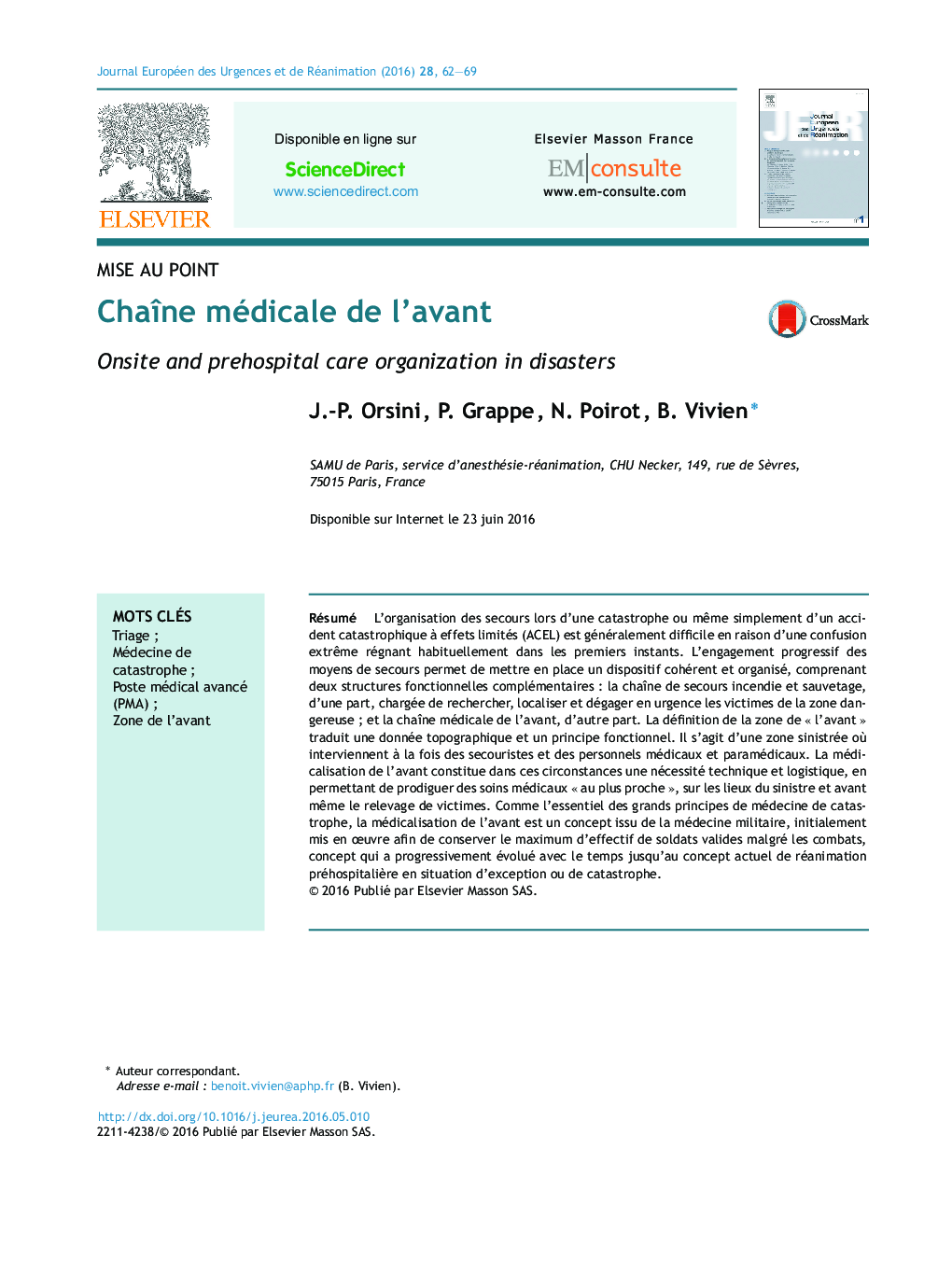| Article ID | Journal | Published Year | Pages | File Type |
|---|---|---|---|---|
| 3251377 | Journal Européen des Urgences et de Réanimation | 2016 | 8 Pages |
Abstract
The organization of emergency response during a large-scale disaster or even a relatively limited catastrophic accident is generally difficult because of the extreme confusion that governs during the first moments. The progressive engagement of first responders makes it possible to set up a coherent and organized system from two complementary functional teams: the fire-and-rescue squad, on the one hand, responsible for finding and safely removing victims from the advanced zone (disaster site); and the prehospital care personnel, on the other. The term “advanced zone” expresses both topographic information and a functional principle. It is a disaster area where both rescue workers and medical and paramedical personnel intervene simultaneously. In these circumstances, medical care in this area is a technical and logistic necessity, to enable the provision of medical care as quickly as possible, on the accident site, even before the victims are moved. Like most major principles of disaster medicine, onsite medical care is a concept derived from military medicine and was initially developed to keep available the maximum number of able-bodied soldiers, despite combats. It has progressively evolved over time to the current situation of onsite and prehospital resuscitation and intensive care in disaster situations.
Related Topics
Health Sciences
Medicine and Dentistry
Emergency Medicine
Authors
J.-P. Orsini, P. Grappe, N. Poirot, B. Vivien,
